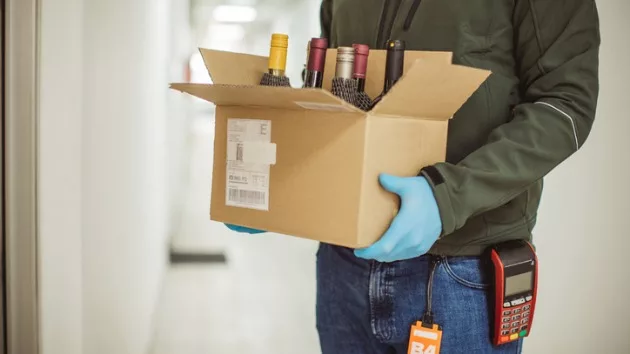One drink… Two drinks… more? What does that really mean? What constitutes “a drink”?
Questions that should be considered as plans are made for holiday festivities, according to the Michigan Liquor Control Commission. The MLCC reminds party goers that counting up the alcohol you’ve consumed requires some honest analysis.
“It can be easy to underestimate how much you’ve had to drink and overestimate your fitness to drive when leaving the bar or party after a night of drinking. Even one drink can impair a person’s judgment. If you plan to drink, don’t plan on driving home,” said MLCC Chair Pat Gagliardi. “If you’re hosting holiday gatherings at home, never allow your underage kids or their friends to drink alcohol. Keep alcohol securely stored without easy access. Let’s keep everyone safe this holiday season.”
For adults who choose to drink alcohol, stick with no more than one “standard” drink a day for women or two for men in accordance with federal dietary guidelines. Be aware that what actually counts as a “standard” drink is less than you think.
According to the National Institute on Alcohol Abuse and Alcoholism, a “drink” is defined as 0.6 ounces of pure alcohol, or roughly:
a 12-ounce beer – (about 5% alcohol)
a 5-ounce glass of wine, (typically about 12% alcohol); or
1.5 ounces of 80-proof distilled spirits (about 40% alcohol).
Think in terms of “standard drinks” — not number of drinks. So, that 32-ounce beer isn’t “just one beer” any more than a Grande Margarita is “just one drink.”
Today’s beer, wine and spirits products come in a wide range of containers with varying alcohol content, making it difficult to calculate “standard drinks.” You can easily lose track of just how much you’re drinking.
According to the National Highway Traffic Safety Administration (NHTSA), every day, 30 people in the United States die in car crashes with an alcohol-impaired driver. This is one death every 50 minutes. In 2020, about 290,000 were injured in such accidents.
Consumer tips for a safe night out:
Never binge drink, which is generally defined as four or more drinks for women and five or more drinks for men in a two-hour period.
Take control – have a plan and stick to it. Order your own drinks to control what’s in them. Remember that no one can force you to have “just one more” — or even one drink.
When you reach your pre-set limit, stop drinking.
Have a plan before you leave the house on how you’ll get home safely. Designate a sober driver to drive you home, or arrange for an Uber, Lyft or take a cab.
If you’re with a friend who has had too much to drink, take the keys away and make arrangements to get your friend home safely.
If you see a drunk driver on the road, call 911 to reach law enforcement.
Parents: know the dangers of underage drinking and “social hosting”
A typical way for underage youth to obtain alcohol is through “social hosting.” This occurs at parties where parents and other adults as “social hosts” knowingly or unknowingly provide alcohol to teenagers (or anyone under age 21) and their peers to drink on their property.
Parents who provide alcohol to underage youth or allow underage drinking on their property risk alcohol-related injuries and/or death of minors. Parents also risk civil and/or criminal liability.
Liability can even extend to parents and homeowners who are not on the premises and/or did not provide the alcohol. Parents may erroneously think that their children are safer if they drink at a house party, but parents are still held legally responsible if an accident should occur.
Monitor alcohol use in your home. If you keep alcohol in your home, keep track of the supply and do not keep alcohol in an accessible place. If your child is invited out to a party, connect with other parents or caregivers to be sure that a responsible adult will be present and there will be no alcohol. Be a good role model when it comes to alcohol use. Never support underage drinking. Help ensure that all our kids are safe and alcohol free.
The MLCC wishes all Michiganders a safe and happy holiday season!
The mission of the Michigan Liquor Control Commission (MLCC) is to make alcoholic beverages available for consumption while protecting the consumer and the general public through regulation of those involved in the sale and distribution of these alcohol beverage products.






